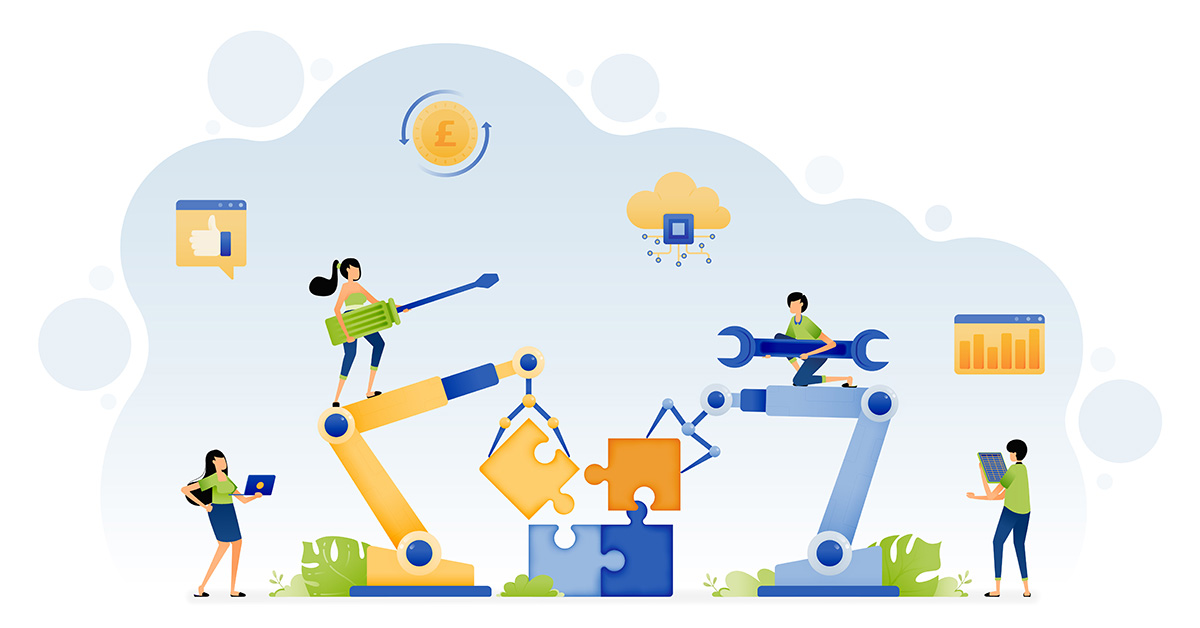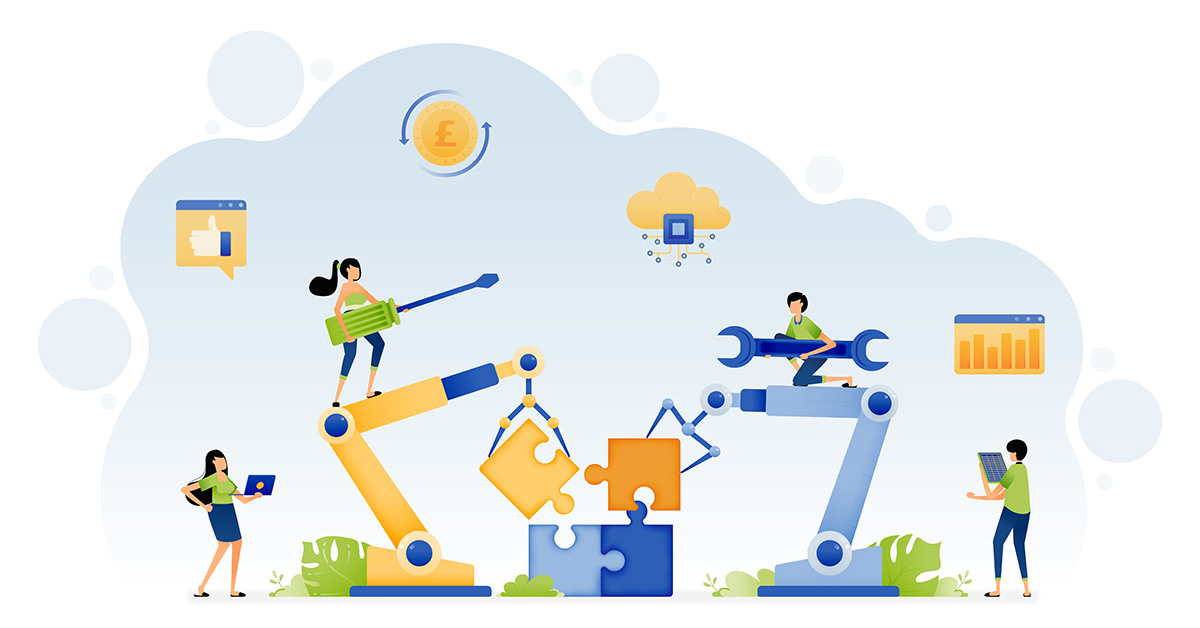What is AIOps? Exploring the Power of AIOps in Modern Operations


In today’s fast-paced and technology-driven business world, organizations heavily depend on their IT infrastructure to deliver seamless operations and exceptional user experiences. However, effectively managing complex IT systems is a significant challenge. AIOps (Artificial Intelligence for IT Operations) is the solution that can make a substantial difference in this aspect. In this blog post, we will explore “What is AIOps?” its transformative impact on IT operations, and how it is reshaping companies’ technological landscapes.

What is AIops?
AIOps, a combination of Artificial Intelligence (AI) and operations (Ops), refers to multi-layer tech platforms utilizing machine learning, analytics, and data science to identify and resolve IT operational issues automatically. Coined by Gartner in 2016, AIOps emerged as a response to the digital transformation shift towards anywhere operations with workloads spread across the globe. It enables technology teams to monitor and optimize complex environments like cloud computing and DevOps. AIOps collects and analyzes data from various sources, quickly detects anomalies, automates issue resolution, predicts problems, optimizes resource usage and promotes collaboration. By leveraging this advancement, companies can achieve faster, more efficient systems operations, proactive issue management, and cost savings.
AIOps generally works by collecting diverse data from various sources and integrating them into a centralized repository for analysis. Through advanced analytical techniques such as machine learning algorithms, statistical analysis, and pattern recognition, the system uncovers valuable insights, identifies correlations, and detects anomalies that indicate problems and primary opportunities for improvement. The detailed process of how AIOps works consists of 5 steps.

How does it work?
AIOps gathers data from various sources such as logs, monitoring tools, metrics, events, and tickets. This data includes information about IT infrastructure, application performance, user behavior, and system logs.
With machine learning algorithms, statistical analysis, and pattern recognition, the system analyzes the collected data to identify patterns, trends, and anomalies. It uncovers insights that are difficult to observe manually and provides a holistic view of the IT environment.
AI-driven IT operation correlates events from different sources to identify relationships and dependencies. It helps in understanding the impact of events on the overall system and detecting potential issues.
AIOps employs anomaly detection techniques to identify deviations from expected behavior. By comparing current data with historical patterns, it can detect anomalies that may indicate underlying issues or potential future problems.
Once anomalies or issues are detected, AIOps automates the resolution process by triggering alerts, generating tickets, or proactively mitigating the problem. This automation speeds up incident response time and reduces manual effort.
Learn more about AI at TECHVIFY:
After thoroughly understanding the question “What is AIOps” and familiarizing with how AIOps works, businesses need to apply this knowledge to reap its benefits. In fact, according to a study by Accenture, organizations leveraging AIOps have reported a significant increase in productivity, with up to a 40% reduction in incident response time and a staggering 60% decrease in critical incidents.
| Operational Efficiency | Businesses can significantly improve operational efficiency by automating routine tasks like monitoring, event correlation, and incident response. This automation reduces manual effort, minimizes the risk of human error, and enables IT teams to focus on more strategic initiatives, enhancing overall productivity. |
| Faster Problem Resolution | Leveraging advanced analytics and machine learning capabilities, IT teams can quickly identify and analyze issues with AIOps. It correlates events, detects anomalies, and determines the root causes of problems, enabling faster and more accurate problem resolution. This development helps minimize downtime and improve overall system availability. |
| Issue Detection | Employ predictive analytics based on historical data and patterns to forecast potential issues and performance bottlenecks. By identifying and addressing problems before they occur, organizations can prevent disruptions, optimize system performance, and enhance user experience. |
| Scalability | With the growth of IT systems and infrastructure, scalability becomes crucial. AIOps can handle vast amounts of data, automatically scaling its analytics and processing capabilities to match the company’s needs. This capability ensures that IT operations can effectively manage larger and more complex environments. |
| Visibility and Insights | Provide comprehensive visibility into the IT environment by integrating data from various sources and analyzing it holistically. This benefit enables organizations to gain valuable insights, uncover hidden patterns, and understand the dependencies between different IT components. The increased visibility allows for better decision-making and proactive planning. |
| Cost Optimization | By automating processes, reducing manual effort, and enabling proactive management, AIOps helps organizations optimize costs associated with IT operations. It allows for better resource allocation, improved efficiency, and reduced downtime, resulting in cost savings and increased return on investment. |
| Continuous Improvement | AIOps systems continuously learn from new data, feedback, and user interactions. Adapting and refining their models and algorithms over time makes them more accurate, adaptive, and effective in handling complex IT scenarios. This continuous learning ensures that AIOps solutions stay current with evolving IT environments and can address emerging challenges effectively. |

Difference between AIOps and MLOps
By realizing the difference between AIOps and MLOps, organizations can effectively allocate resources, implement appropriate strategies, and maximize the benefits of both approaches.
| Comparison Criteria | AIOps | MLOps |
| Focus and Purpose | Leverage AI and ML techniques to enhance and automate IT operations. | Focus on the operationalization and management of machine learning models. |
| Scope and Application | Tasks in IT operations, such as monitoring, event correlation, etc. | End-to-end management of machine learning models, including development and deployment. |
| Key Components |
|
|
| Interrelationship | Leverage machine learning models as part of its analytical capabilities. | Be integrated within AIOps to operationalize and manage machine learning models effectively. |
| Objective | Improve operational efficiency, problem resolution, and issue detection. | Ensure the scalability, reliability, and continuous optimization of ML models. |
| Domains | IT domains, including infrastructure, application, and service management. | Data science and AI projects, where machine learning models are utilized. |
| Workflow | Streamline IT operations by automating routine tasks and proactively detecting and resolving issues. | Manage the lifecycle of ML models from development to deployment and maintenance. |
| Advantages | Enhance operational efficiency, accelerate problem resolution, and provide improved visibility. | Ensure scalable model deployment, effective monitoring, and continuous model optimization. |
| Methodology | Leverage AI and ML techniques for data analysis, event correlation, and predictive analytics. | Employ best practices for model development, version control, deployment pipelines, and monitoring. |
AIOps is revolutionizing how organizations manage their IT operations, offering significant benefits such as improved operational efficiency, faster problem resolution, scalability, enhanced visibility, and insights. By harnessing the power of AIOps vs MLOps, businesses can optimize their IT infrastructure, proactively address issues, and deliver exceptional user experiences. As technology evolves, embracing AIOps becomes increasingly crucial for organizations seeking to stay competitive in the digital landscape.
Please feel free to contact us for a free consultation: DevSecOps Consulting


Table of ContentsI. What is AIOps?II. How does AIOps work?1. Data Collection 2. Analytics 3. Correlation4. Anomaly Detection 5. Execution III. Benefits of AIOpsIV. Difference between AIOps and MLOpsConclusion In the fast-evolving world of online dating, understanding the cost to build a dating app is vital for anyone looking to break into the market. From the initial concept to the final launch, the journey requires careful planning around feature selection, platform compatibility, and user security—each of which plays a critical role in shaping both the app’s functionality and its budget. The online dating market, valued at USD 9.4 billion in 2022, is projected to…
22 October, 2024

Table of ContentsI. What is AIOps?II. How does AIOps work?1. Data Collection 2. Analytics 3. Correlation4. Anomaly Detection 5. Execution III. Benefits of AIOpsIV. Difference between AIOps and MLOpsConclusion You’ve started a business, and now you need a website. But no one on your team knows much about coding, and hiring a full-time web developer just isn’t in the cards right now. Sound familiar? If so, outsourcing your web design might be the perfect solution. Whether you’re a startup building your online presence or an established business looking for a website refresh, outsourcing can help you get there faster and more affordably. In fact,…
21 October, 2024

Table of ContentsI. What is AIOps?II. How does AIOps work?1. Data Collection 2. Analytics 3. Correlation4. Anomaly Detection 5. Execution III. Benefits of AIOpsIV. Difference between AIOps and MLOpsConclusion With much of our communication happening online, it’s no surprise that the dating world has also shifted in the same direction. In 2021, 49 million people in the U.S. alone turned to online dating services—whether to find a serious partner or just enjoy a fun date. The trend became even more pronounced in 2020, as men and women increasingly embraced online dating during pandemic lockdowns and social distancing measures. Additionally, almost half of men and…
18 October, 2024


Thank you for your interest in TECHVIFY Software.
Speed-up your projects with high skilled software engineers and developers.
By clicking the Submit button, I confirm that I have read and agree to our Privacy Policy